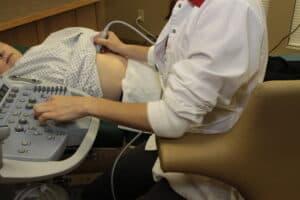
Ultrasound Ergonomics: An Overview
0% Complete
Course Overview
This course explores the critical role of ergonomics in reducing work-related musculoskeletal disorders (WRMSD) among sonographers. Learn about the common risks, including over-reaching, trunk twisting, wrist strain, and arm abduction, and discover strategies for minimizing these risks. The course covers best practices for optimal posture, the importance of ergonomic equipment, and techniques for reducing injury through workstation adjustments and regular movement. It also emphasizes the role of engineering and administrative controls, alongside personal protective solutions, in promoting a healthier work environment for sonographers. Perfect for ultrasound professionals looking to improve their physical well-being and reduce the risk of injury.
Objectives
After completing this activity, the participant will:
Define and identify the normal sonoanatomy of joints
Identify sonopathology in terms of synovitis and power doppler signal and grade using the EULER-OMERACT consensus guidelines
Identify erosions, intraarticular calcium, and effusions.
Perform a standardized EULER-OMERACT arthritis study of the hand.
Target Audience
Physicians, sonographers, and others who perform and/or interpret ultrasound.
Faculty & Disclosure
Faculty
Julie Osdieck, BS, RDMS, RMSKS
Lead MSK Sonographer Ultrasound First Creve Coeur, MO 63141
Jason Cox, MD
Program Director, Attending Musculoskeletal Radiologist Institute for Advanced Medical Education Ultrasound First Creve Coeur, MO 63141
Disclosure
In compliance with the Essentials and Standards of the ACCME, the author of this CME tutorial is required to disclose any significant financial or other relationships they may have with commercial interests. Julie Osdieck, RDMS, RMSKS and Dr. Jason Cox, MD discloses no such relationships exist. IAME has assessed conflict of interest with its faculty, authors, editors, and any individuals who were in a position to control the content of this CME activity. Any identified relevant conflicts of interest have been mitigated. IAME's planners, content reviewers, and editorial staff disclose no relationships with ineligible entities.
Credits
* AMA PRA Category 1™ credits are used by physicians and other groups like PAs and certain nurses. Category 1 credits are accepted by the ARDMS, CCI, ACCME, and Sonography Canada.
Course Details
Accreditation
The Institute for Advanced Medical Education is accredited by the Accreditation Council for Continuing Medical Education (ACCME) to provide continuing medical education for physicians.
The Institute for Advanced Medical Education designates this enduring material for a maximum of 2 AMA PRA Category 1 Credit™.
Physicians should only claim credit commensurate with the extent of their participation in the activity. Sonographers: These credits are accepted by the American Registry for Diagnostic Medical Sonography (ARDMS), Sonography Canada, Cardiovascular Credentialing International (CCI), and most other organizations.